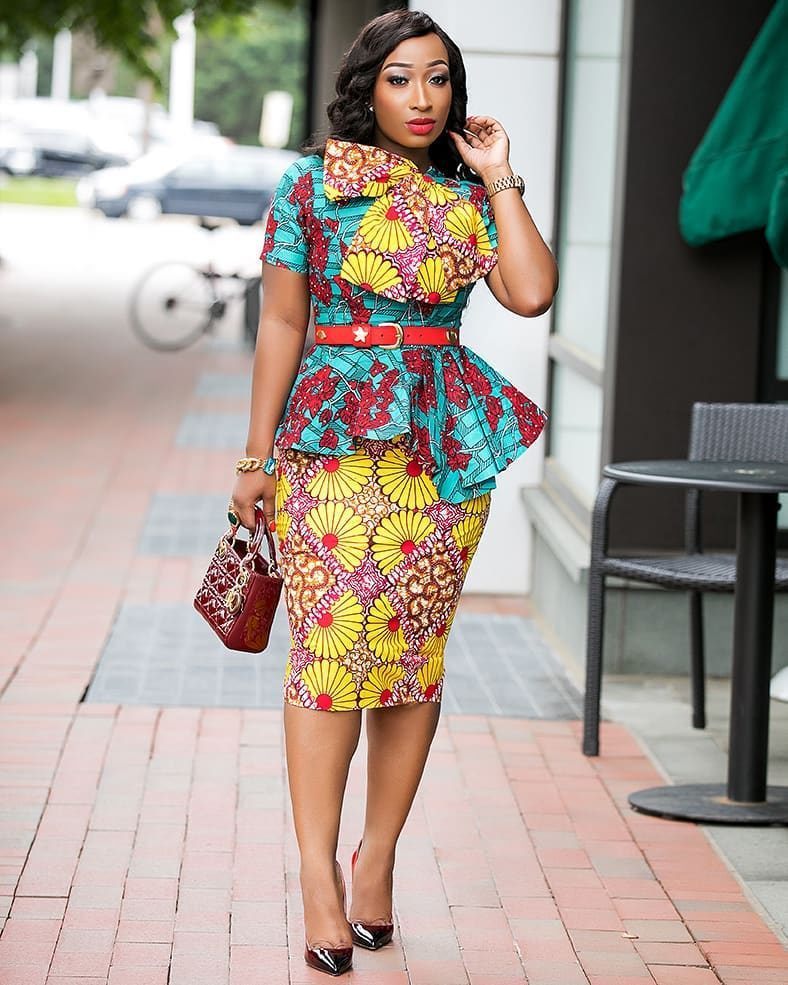African dress patterns hold a unique place in the world of fashion, serving as a beautiful canvas for cultural expression and creativity. Each pattern tells a story, reflecting the diverse traditions, histories, and vibrant lifestyles of the various African communities. From the intricate designs of kente cloth in Ghana to the bold colors of the Maasai shuka in Kenya, these patterns are more than just fabric; they symbolize identity, heritage, and pride.
The rich tapestry of African dress patterns encompasses a wide array of techniques, textiles, and motifs that can be traced back centuries. These patterns are not only significant in the context of clothing but also play a crucial role in ceremonies, celebrations, and rituals. As globalization influences fashion trends, the appreciation for African dress patterns continues to grow, leading to a resurgence of interest both on the continent and internationally.
In this article, we will delve into the captivating world of African dress patterns, exploring their origins, significance, and the impact they have on contemporary fashion. Whether you're a fashion enthusiast or simply curious about the cultural heritage behind these stunning designs, join us as we uncover the beauty and complexity of African fashion.
What Are the Origins of African Dress Patterns?
African dress patterns have their roots in the continent's rich history and varied cultures. Each region has its own distinct style influenced by the local environment, resources, and traditions. The use of natural dyes and handcrafted fabrics is prevalent, with artisans often passing down their skills through generations. The patterns often incorporate symbols and motifs that carry deep meanings, such as fertility, strength, and community.
How Do Different Regions of Africa Contribute to Dress Patterns?
Each African region boasts its unique dress patterns, which reflect local customs and lifestyles. Here are some notable examples:
- West Africa: Known for its vibrant kente cloth and adinkra symbols, West African patterns often highlight the wearer's status and identity.
- East Africa: The Maasai shuka, with its bold red and blue checks, represents the Maasai people's heritage and is often worn during important ceremonies.
- North Africa: Berber textiles feature intricate geometric patterns, often made with camel wool and dyed with natural colors.
- Southern Africa: Shweshwe fabric, popular in South Africa, is characterized by its printed patterns and is commonly used in traditional dresses.
What is the Role of African Dress Patterns in Ceremonies and Festivals?
African dress patterns play a significant role in cultural ceremonies and festivals. They are often worn during important events such as weddings, funerals, and initiation rites, where specific patterns may denote particular meanings or signify the wearer's social status. For example, certain kente patterns may only be worn by royalty or during special occasions, emphasizing their significance in the social fabric of the community.
Who Are the Influential Designers Promoting African Dress Patterns?
Several designers have gained international acclaim for their innovative use of African dress patterns. They blend traditional techniques with contemporary fashion, making these patterns accessible to a global audience. Notable designers such as Ozwald Boateng, Duro Olowu, and Lisa Folawiyo have redefined African fashion, showcasing the beauty and versatility of these patterns on international runways.
What Materials Are Commonly Used in African Dress Patterns?
The materials used in creating African dress patterns vary greatly depending on the region. Here are some commonly used fabrics:
- Cotton: Widely used due to its breathability and comfort, especially in West African textiles.
- Silk: Often reserved for special occasions, silk is used in high-end fashion and traditional garments.
- Wool: Common in North African textiles, especially in the making of warm garments.
- Beads and Embroidery: Many dresses incorporate beads and embroidery, adding texture and color to the designs.
How Can One Incorporate African Dress Patterns into Everyday Fashion?
Incorporating African dress patterns into everyday fashion is easier than ever. Here are some tips:
- Mix and Match: Pair traditional fabrics with modern cuts for a unique look.
- Accessorize: Use scarves, bags, or jewelry made from African textiles to add a touch of culture to your outfit.
- Support Local Artisans: Purchase handmade items from local artisans or fair-trade shops to ensure authenticity.
- Experiment: Don't be afraid to experiment with bold colors and patterns to make a statement.
What Is the Future of African Dress Patterns in Global Fashion?
The future of African dress patterns looks promising as more designers and brands recognize the importance of diversity in fashion. With a growing appreciation for cultural heritage, we can expect to see a fusion of traditional and modern styles that celebrate African identity. Additionally, the rise of sustainable fashion practices aligns well with the traditional methods used in creating these patterns, ensuring their relevance in contemporary society.
How Can We Preserve African Dress Patterns for Future Generations?
Preserving African dress patterns is crucial for maintaining cultural identity and heritage. Here are some ways to contribute:
- Education: Teach younger generations about the significance of these patterns and the skills involved in creating them.
- Support Artisans: Invest in local artisans and their crafts to keep traditional methods alive.
- Promote Cultural Events: Participate in and promote cultural festivals that celebrate African fashion and textiles.
- Document Stories: Collect and share stories about the history and meanings of various patterns to keep their significance alive.
In conclusion, African dress patterns are more than just aesthetic designs; they are a vital part of the continent's cultural identity. As we embrace these patterns in modern fashion, we also honor the traditions and stories they represent. By understanding and appreciating the significance of these patterns, we can ensure that they continue to inspire and connect future generations to their cultural roots.


